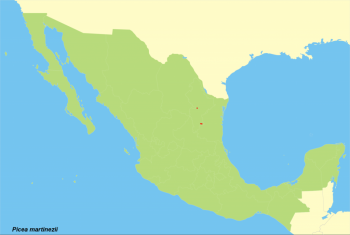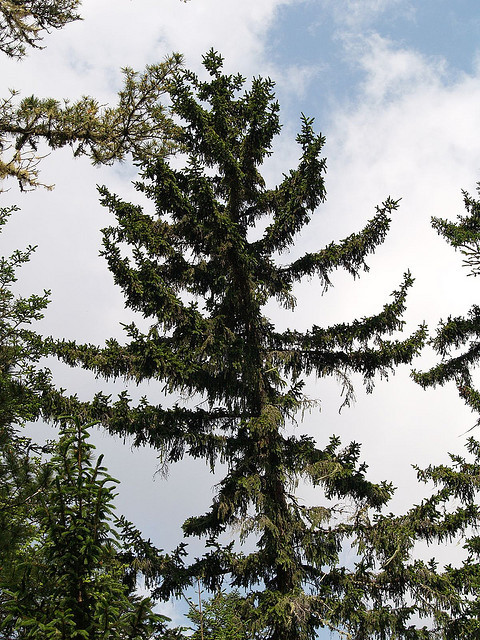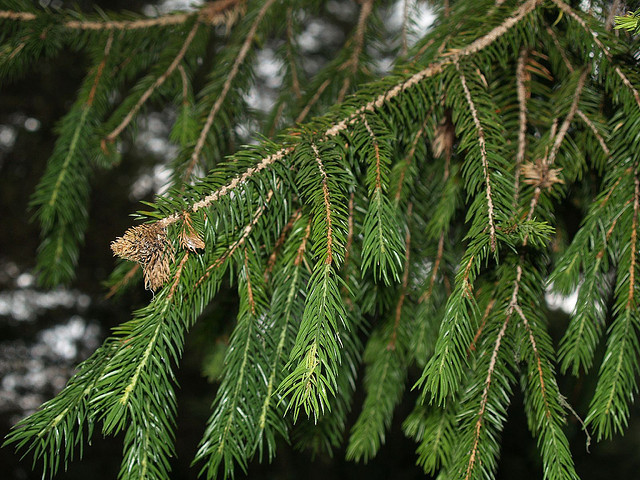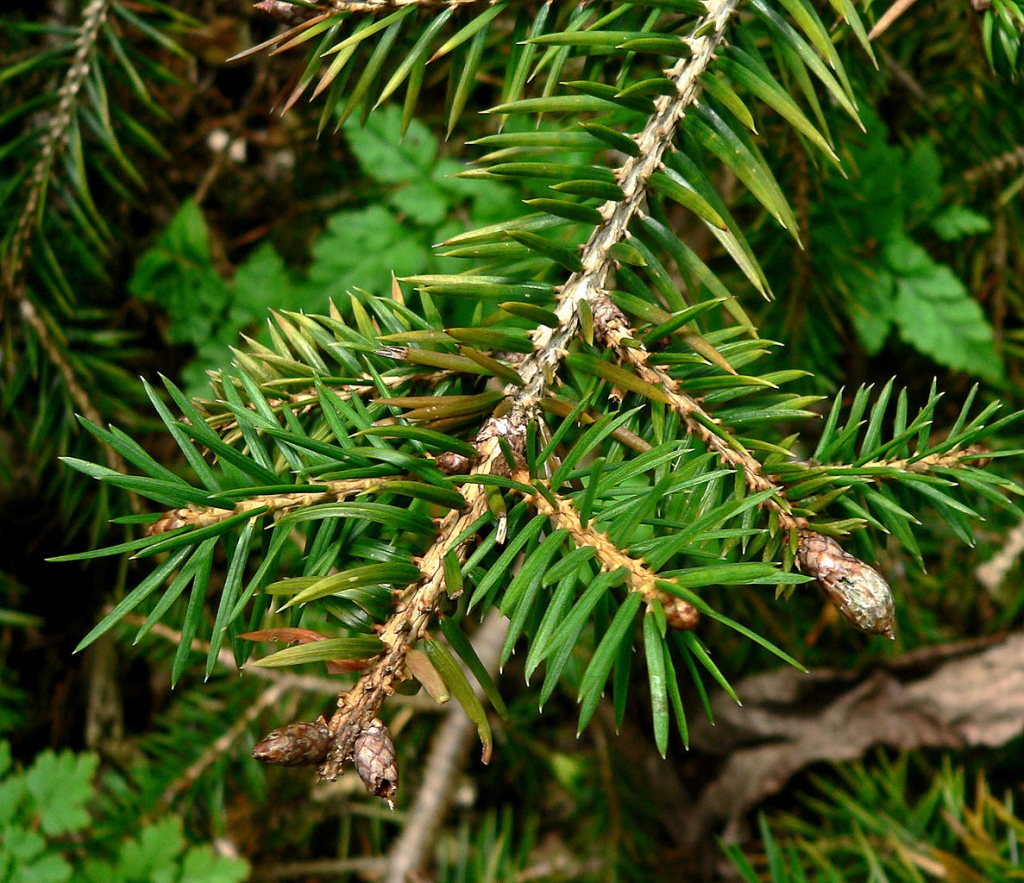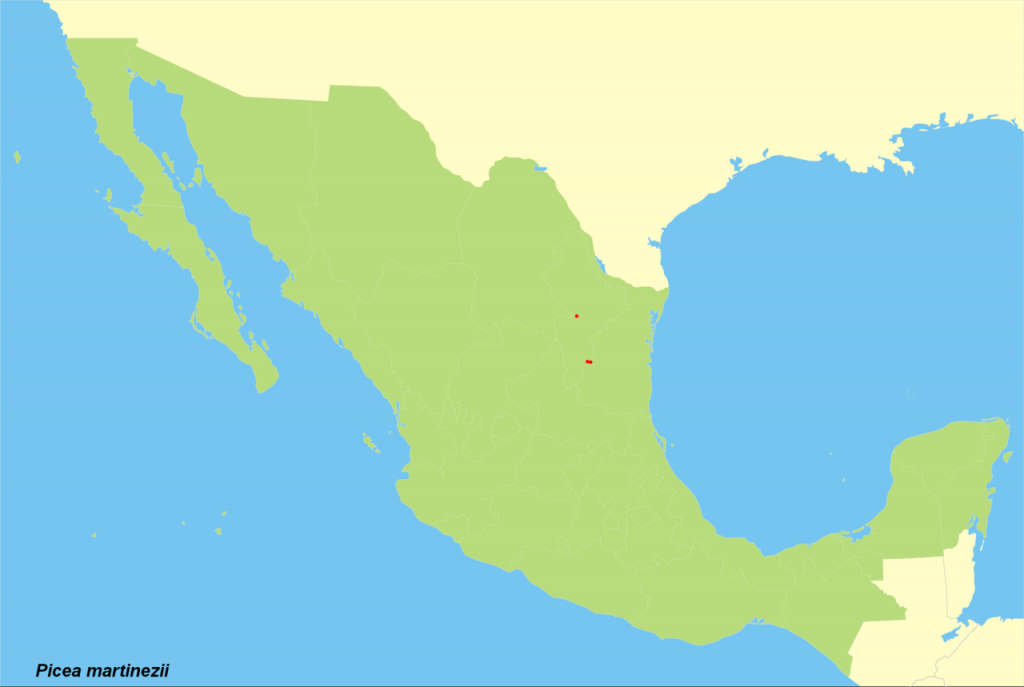Picea martinezii, as described in 1988 by Thomas F. Patterson in the 13th edition of Sida, is commonly known as the Nuevo León or Martinez's spruce; as well as Pinabete in the Spanish language. The species name honors Maximo Martinez Martinez (1888 - 1964), a Mexican professor and botanist who taught in many Mexican educational institutions and created numerous botanical works, particularly focusing on pine species.
Nuevo León spruce was only discovered in 1981, and is critically endangered with just two small populations, comprising a few hundred trees and a dozen trees respectively. Fossil evidence shows it had a wider distribution in the past, south to central Mexico. It is related to Chihuahua spruce (Picea chihuahua) from northwest Mexico, but differs in the longer, green leaves, and the larger, broader cones with larger scales. No other related spruces are found in North America, with its next-closest relatives in eastern Asia.
Description. Nuevo León spruce is a medium-sized evergreen coniferous species of tree that grows to mature heights of 80 to 115 feet (25 - 35 m), with a trunk up to 40 inches (1 m) in diameter, measured at breast height; and a conic crown.

Distribution. This species is native to northeastern Mexico, where it occurs at two localities in the Sierra Madre Oriental mountains in Nuevo León. It is found at moderate elevations from 7,000 to 8,500 feet (2,150 - 2,600 m) above sea level, growing along stream sides in mountain valleys, where moisture levels in the soil are greater than the otherwise low rainfall in the area would suggest.
Hardy to USDA Zone 8 - cold hardiness limit between 10° and 20°F (-12.1° and -6.7°C)
It is a very attractive tree and is starting to be planted as an ornamental tree in botanical gardens, particularly valued in warm areas as it is one of the most heat-tolerant of all spruces.
